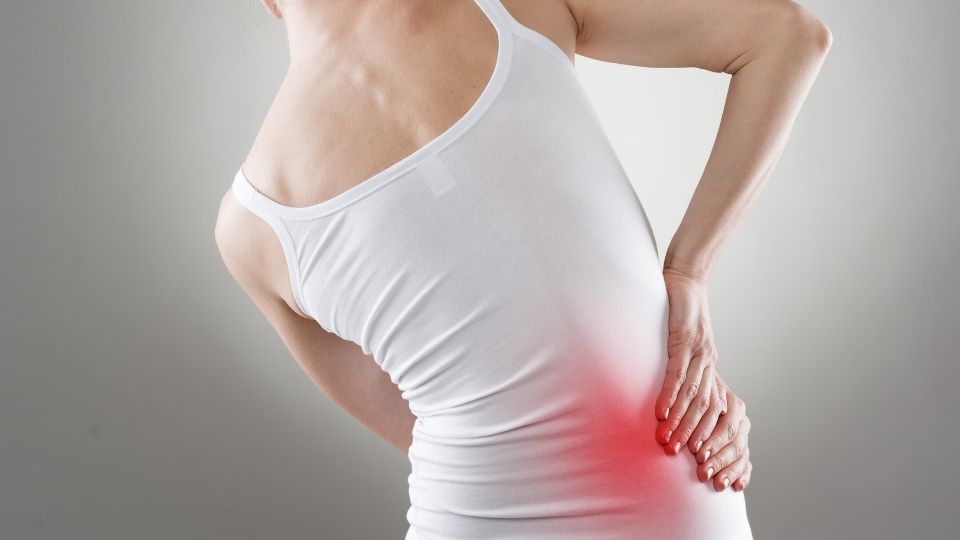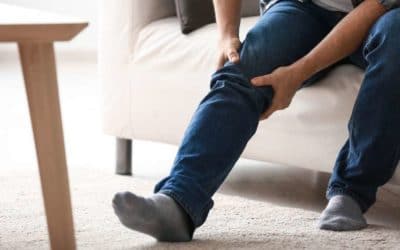What Causes Hip Pain When Sitting
From my thirty years of practice, I found that hip pain is generally from sitting wrong. I found that in most cases, excess stretching of the IlioTibial Band (ITB) leads to hip pain. For example, this happens when we cross our legs or stand with and lean with more pressure on one side.
Furthermore, a person with weak gluteal muscles (the muscles surrounding the hip and buttocks) will feel increased tension in their ITB due to this muscle having to work harder to stabilize the pelvis while standing or walking.
As a general rule, sitting on an uneven surface, poor posture, crossing your legs, hip injury, or lupus are all causes of hip pain. The weight you are carrying is imbalanced when you sit cross-legged. Soft seats can lead to you tipped to either side, which can lead to hip pain.
If you have been dealing with hip pain, there are things that I know as a chiropractor and an ergonomic adviser on how to relieve your symptoms of discomfort while seated. Here are some research-based best practices for sitting that can help!
Positions That Can Cause Hip Pain:
- Standing with greater weight on one hip than the other
- Wearing an infant on your hip
- Sleeping on your side with a poor mattress
- Legs crossed while seated
- Sitting with your feet apart and knees together
- Sitting on a very low chair
3 Ways to Relieve Hip Pain When Sitting
Sitting correctly is the first step in avoiding hip pain. Here are some simple steps that are great for reducing and preventing hip pain while sitting.
1. Avoid Crossed Legs
Never cross your legs in a sitting position. Make sure your hips, knees and feet are parallel.
2. Get Hip Angle Right
Keep your hips in a position where they are bent more than 90°. Ideally, your trunk-to-thigh angle should be around 110°.
3. Maintain Good Posture
Make sure your posture is improved to relieve any pressure on your hip. Correcting your posture will help you recover. Remember to:
- When sitting – keeps hips consistently above knees
- When standing – keep knees unlocked.
- Keep moving – make it a point to move every 20 minutes throughout your day.
How to Know if Your Hip Pain Is Serious
If you are suffering from any of the following conditions, it is essential to seek medical attention immediately.
- If you have fever, chills, redness, and general malaise, you may have hip inflammation.
- Spontaneous swelling.
- You can’t move your hips or legs.
- Acute pain.
- The affected leg is unable to bear weight.
What Are the First Signs of Hip Problems?
Since the hip joints bend inward to support load, they become sore when people stand or sit improperly. There are various types of hip pain, but typically it feels like a stabbing or dull ache, or even a more virulent pain than that. In normal circumstances of prolonged sitting, you are likely to feel stiff in the hips. However, if you prolong your sit without any rest breaks, the risk of hip pain is highly increased.
Where is your Hip Pain?
Different areas in your hip can cause pain, so if you have hip pain, there may be another reason for it. For example:
- When you sit, you can experience hip pain in the surrounding area of your hip, thigh, or outer buttock, which is caused by the muscles, tendons, or ligaments in the hip.
- If you experience groin or hip pain while sitting, it may result from health issues in the hip bones and joints.
- Referred pain is when your lower back pain causes pain in your hip when you’re sitting.
Nine Causes of Hip Pain
A number of factors could cause your hip pain. Here’s what these causes mean and how you can take action.
1. Poor posture
With poor posture or no proper back or hip support, sitting can place additional pressure on your hips. This can ruin your sitting posture and cause hip pain.
2. Crossing your legs
Plating your head on one side while sitting and leaning over one way can also put more pressure on one or both hips. Poor sleep posture can cause pain as well, like lying on your side for too long when you’re lying down.
3. Sleeping on an uneven surface
The mattress you sleep on may be to blame for your hip pain. A good mattress could be a blessing for hip pain sufferers. In your sleep, lie on your non-painful side and elevate your upper leg on a pillow alongside your body. Protect your body with a natural latex mattress that meets all your needs for comfort, resilience, and non-toxicity.
4. Sitting on an uneven surface
It may be less comfortable to sit on a wallet, couch, car seat, poor quality seat cushion, or poor quality chair. When this happens, you will sit unequally. This means that your hips will be more stressed.
5. Bursitis
Bursitis is an inflammatory condition in the tiny sacs of fluid in the hip joints (bursa). When they swell, the hip joints can become stiff and painful. Bursitis can trigger joint pain when sitting on the outside of the hip.
6. Tendonitis
A person sitting for too long or in poor posture can cause the tendons in the hips to stretch out, leading to tendonitis or inflammation of the hip tendons, leading to hip pain at rest, when walking, or even lying down.
7. Pinched Nerve
An injured lower back spinal nerve can lead to hip pain when sitting.
8. Injured hip joint
Injury is caused when the long leg bone (femur) is not as glidingly aligned around the hip joint. This might be the result of damaged cartilage between these bones.
9. Arthritis
Arthritis in the hips and other joint pain causes walking, prolonged standing and sitting to be highly uncomfortable. Wearing your cartilage covering leads to the hip joint feeling painful when seated. Furthermore, arthritis can cause your hip joint to swell when you sit. The following types of arthritis occur in the hip joint:
- Inflammatory arthritis. This will usually cause inflammation and pain in both hip joints.
- Osteoarthritis (DJD). Wear-and-tear arthritis may affect one hip or both.
Sharp Pain in the Lower Back or Hip on One Side
If you suffer shooting pain on one side of your lower back and hip, you may have a muscular spasm, joint dysfunction, and nerve compression. It would be a good idea to have your spine checked by a chiropractor.
Why Crossing Your Legs Hurts Your Hips
The chances of you having tendinitis are high if you experience hip pain when you cross your legs. Tendonitis is an inflammation of the tendons which connect your gluteal muscles to the hip bones. This condition is caused by muscle imbalance, such as avoiding certain activities, crossing your legs, or sitting on a wallet.
What if My Hip Pain Goes Away after Walking?
The pain in people with mild to moderate hip arthritis sometimes goes away after resting, but paradoxically, prolonged rest might make them worse. People with moderate to severe hip arthritis generally have pain all of the time. People with hip osteoarthritis have difficulty getting out of bed or from a chair after a long period of sitting, stiffness and pain may manifest most prominently.
Conclusion
By following my advice today, I’ve helped countless people avoid hip pain issues by setting up an ergonomic home office. By implementing these simple changes to your sitting environment, you should experience long-lasting benefits.
It is, therefore, vital to make sure your home office is ergonomically sound. What you must remember is that unconsciously complacent movements will eventually lead you to break down. If you stay active and aware throughout the day, you should avoid pain and develop lasting good posture habits.
Sources
- Wilson, J.J. and Furukawa, M., 2014. Evaluation of the patient with hip pain. American family physician, 89(1), pp.27-34.
- Kuhlman, G.S. and Domb, B.G., 2009. Hip impingement: identifying and treating a common cause of hip pain. American family physician, 80(12), pp.1429-1434.
- Pope, D.P., Hunt, I.M., Birrell, F.N., Silman, A.J. and MacFarlane, G.J., 2003. Hip pain onset in relation to cumulative workplace and leisure time mechanical load: a population based case-control study. Annals of the rheumatic diseases, 62(4), pp.322-326.
- Azevedo, D.C., Santos, H., Carneiro, R.L. and Andrade, G.T., 2014. Reliability of sagittal pelvic position assessments in standing, sitting and during hip flexion using palpation meter. Journal of bodywork and movement therapies, 18(2), pp.210-214.










